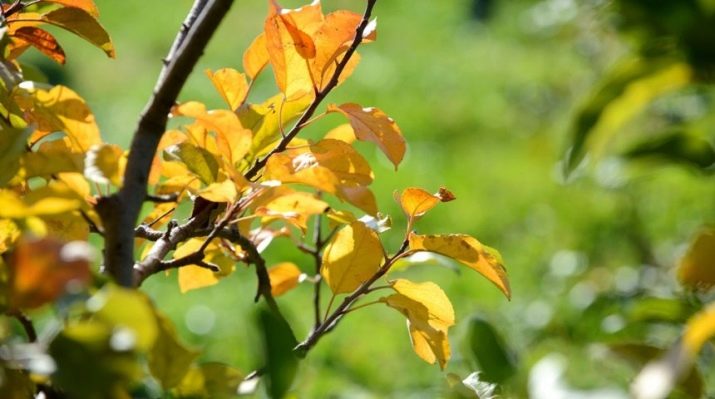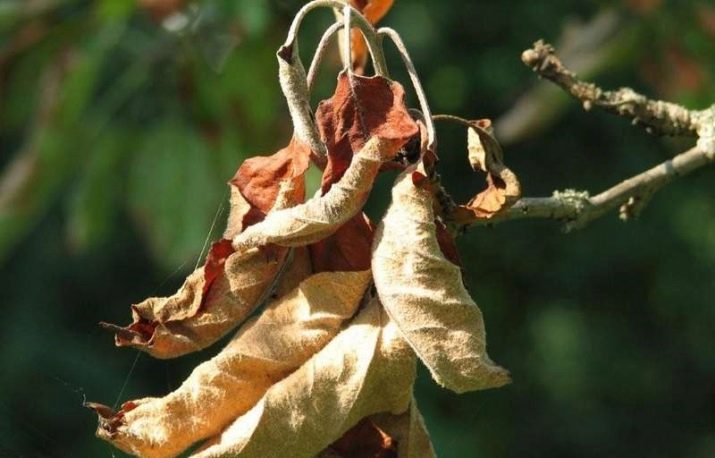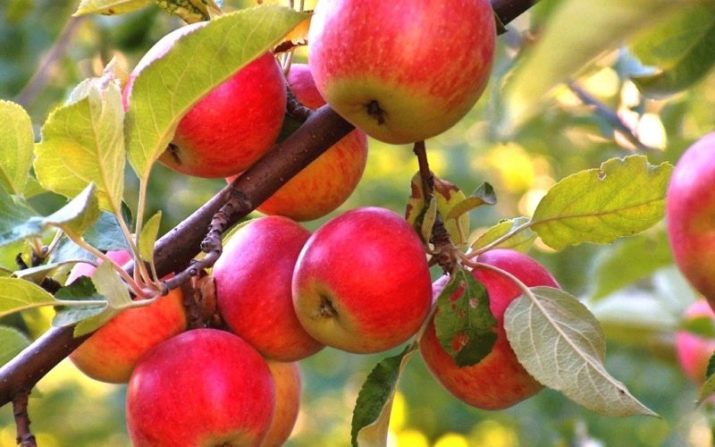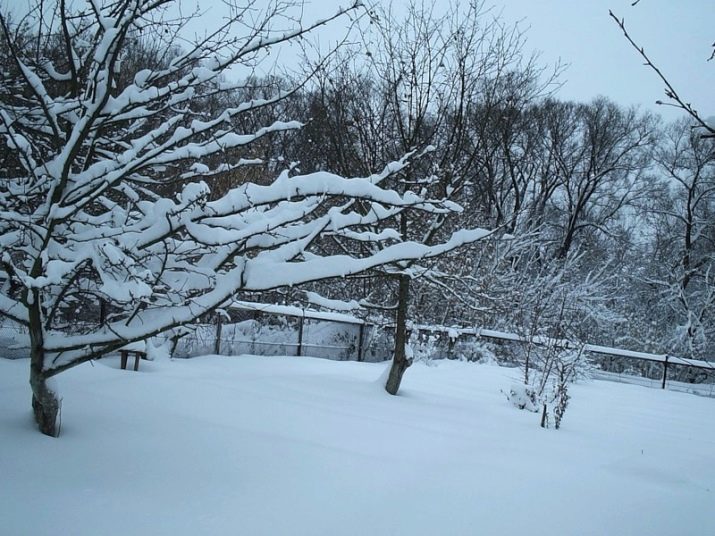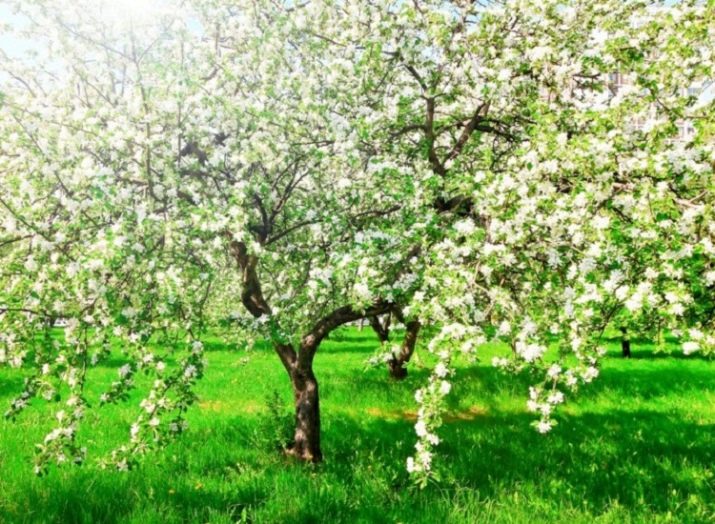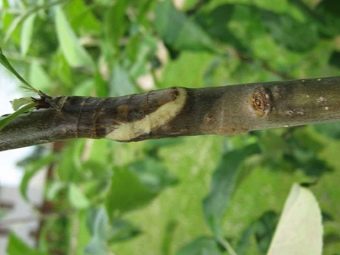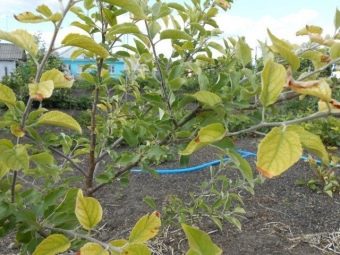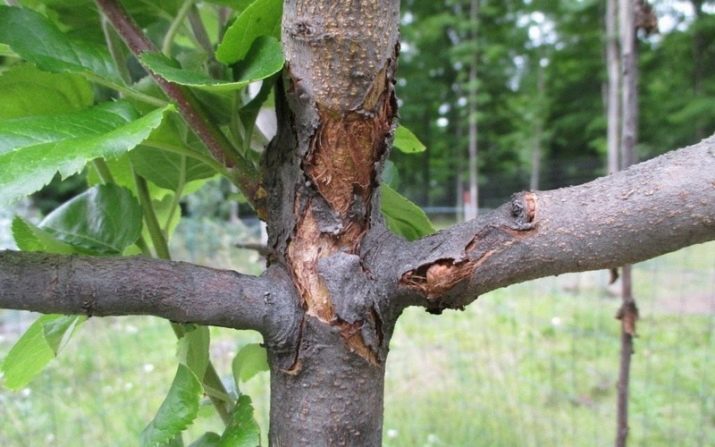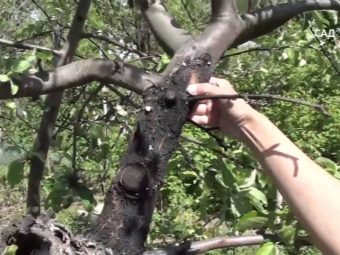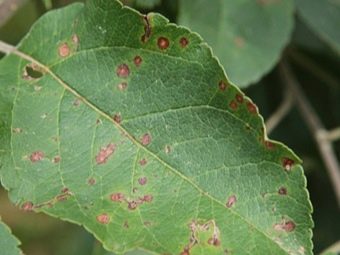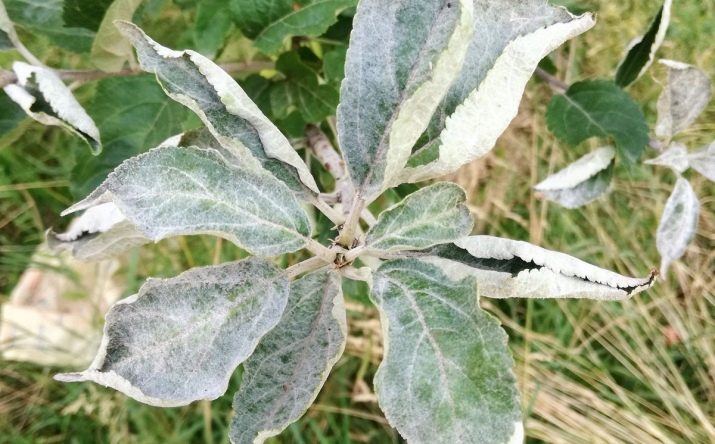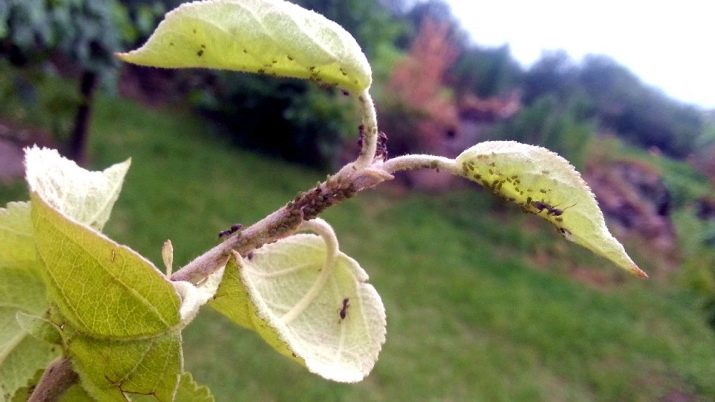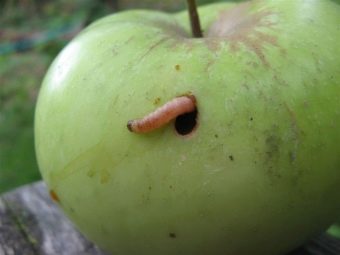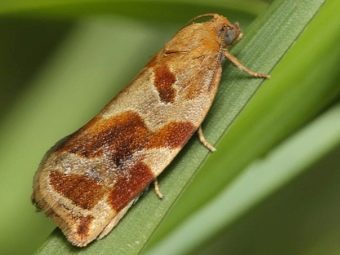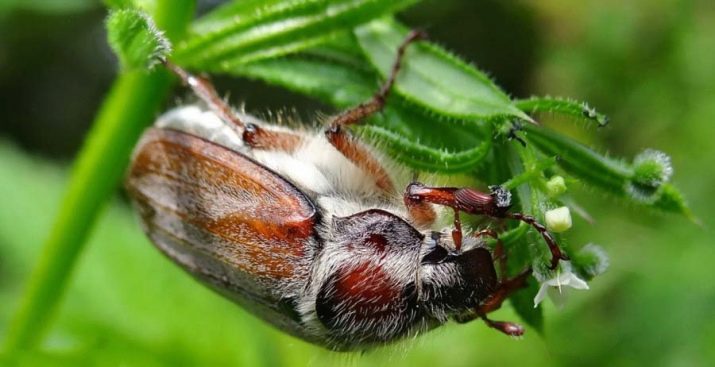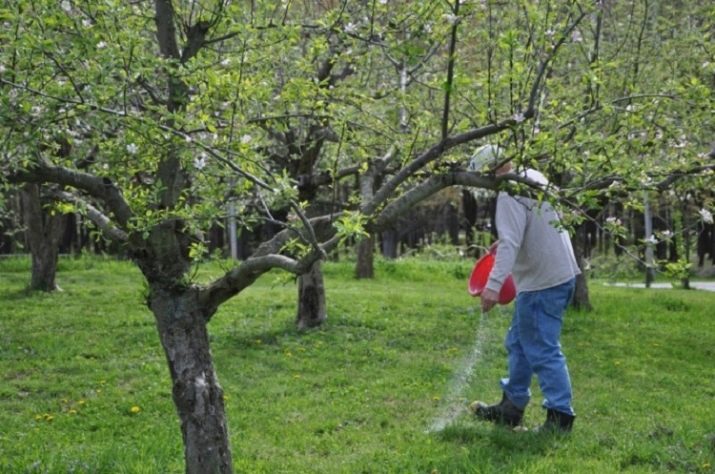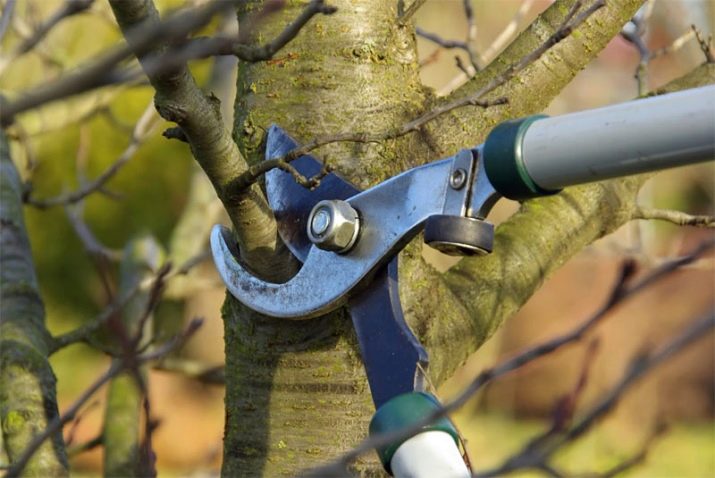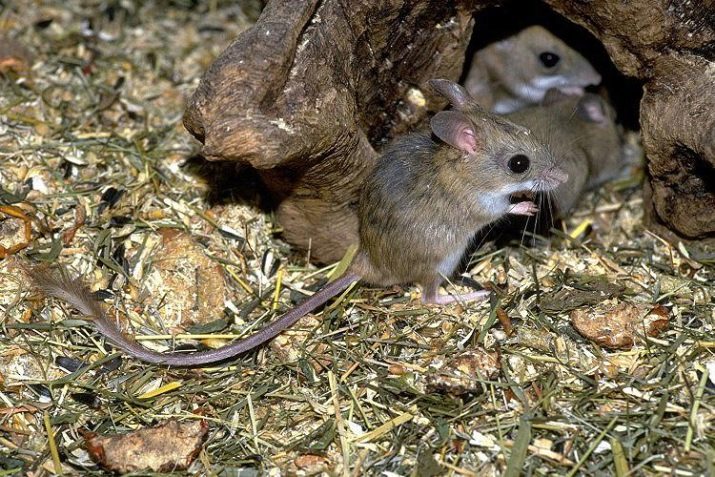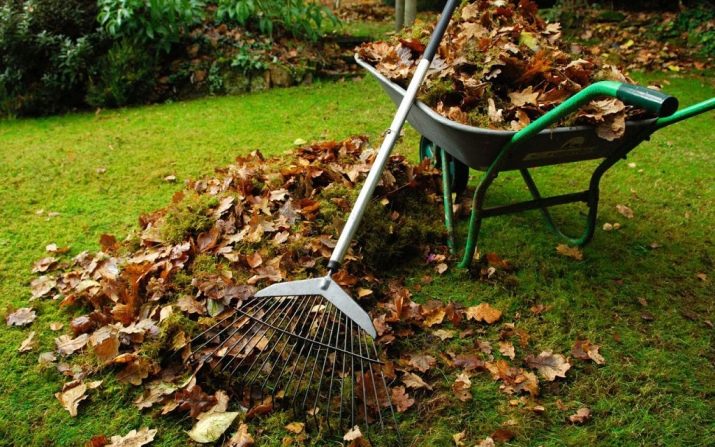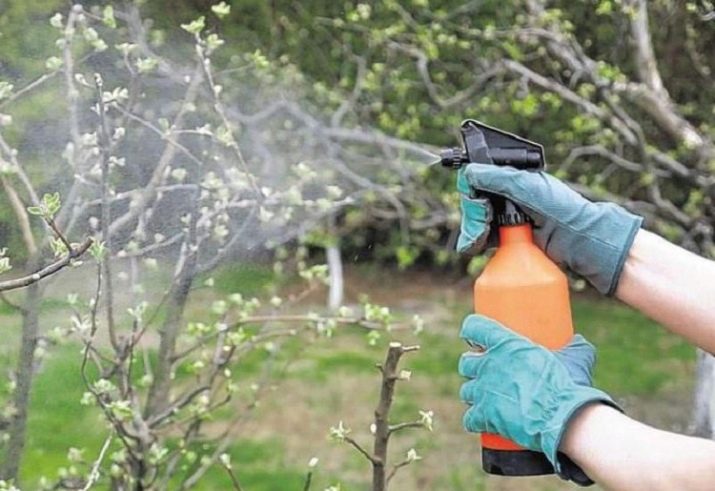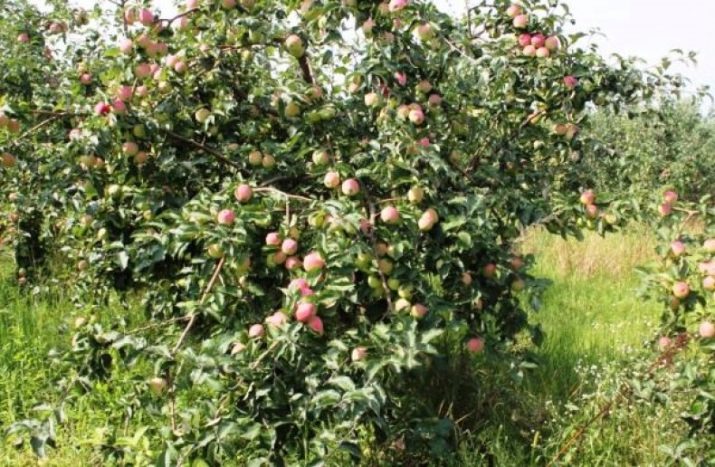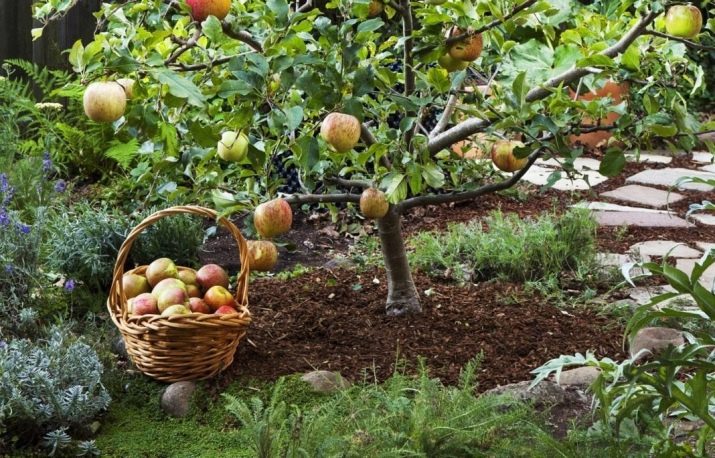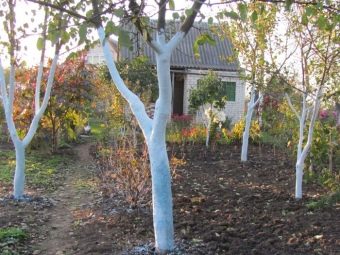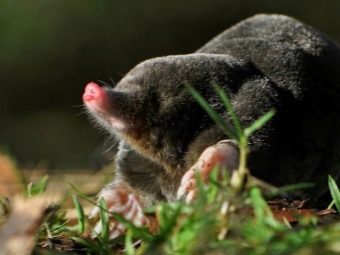Why does an apple tree dry up and how can a tree be saved?
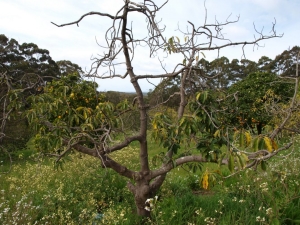
Unfortunately, gardeners often have to observe a rather gloomy picture.On the apple tree suddenly, seemingly for no reason, for no reason, turn yellow, dry and fall leaves. The fruit tree, which had recently possessed a lush green crown, is fading just before our eyes. It is important not to lose time, correctly identify the cause and help the apple tree. What factors can lead to drying of foliage and branches, as well as ways to eliminate them, will be discussed in this article.
The reasons
So, if trouble still happened, and you see fading leaves, you need to start by identifying the causes of this phenomenon. And there are a lot of them.
The factors that cause an apple to dry can be divided into several groups:
- neglect of agricultural technology, improper care of the fruit tree;
- attacks of harmful insects;
- disease affliction;
- micronutrient deficiencies, insufficient or untimely feeding.
Further, these reasons and factors will be discussed in detail. Also will be given methods for their elimination, ways of helping the affected fruit tree.
Care errors
Many novice gardeners and gardeners consider apple a very unpretentious culture. They say, the main thing is that the sapling got acclimatized, and there the matter will go. This point of view is fundamentally wrong.
Of course, there are wild varieties of this tree that grow in forests and fields without receiving any care. However, the fruits of such "free" apple trees do not have good taste. The apples on them are very small, sour, astringent.
“Domesticated” apple trees are bred first of all to produce crops of a certain quality. Therefore, the tree spends a lot of effort on the formation of fruits.
And care for the garden fruit crop requires a very competent and attentive throughout the life of the tree.
So, what kind of mistakes in the care can lead to the fact that the apple tree dries out before our eyes:
- In regions with frosty winters, the fruit tree must be properly prepared for it. If the stem of the plant is not wrapped up and protected from frost, there is a risk of the formation of so-called frost cracks in it. They arise from the fact that the moisture constantly contained in the fibers of the wood freezes and expands in volume. As a result, the capillaries of the trunk and bark fibers are damaged or broken.
In severe frosts, the surface roots of the fruit tree may be damaged.
Often, it is the freezing of the roots and the trunk that cause a previously strong and healthy apple tree suddenly dried up after winter.
- Improper soil can cause gradual drying of the fruit tree. In this case, separate branches begin to wither and die off, and then all the leaves fall from the tree. Apple trees do not tolerate sandy and clay soils. It is also undesirable to plant a tree in the ground with a high percentage of gravel and gravel.
- Apple root system may suffer from excessive soil moisture or close groundwater flow. In this case, the oxygen supply of the root system is disturbed. Constant high humidity over time also leads to rotting of the roots of the tree. In such conditions, the apple tree becomes very weak, practically stops growing, and actively loses its foliage.
- When planting a seedling, it is necessary to think in advance about what plants and crops will grow next to a growing apple tree. Often the cause of poor development or drying of the tree is root competition.
In an adult apple tree, the roots are approximately two times wider in diameter than its crown. Therefore, if other adult and powerful trees grow in the immediate vicinity, the apple tree may simply lack nutrition.
- Also in the root zone should be regularly thinning or complete removal of weeds and grasses. Plants such as wheatgrass and timothy, have a toxic effect on the apple tree. They certainly need to get rid of.
- It is important to observe the timing of planting seedlings. Landing is carried out in the autumn or spring, in the landing hole prepared before the winter.Young trees planted in the summer have a very small percentage of survival. The branches and the tip of the "summer" seedling quickly turn yellow.
- Excessive care and excessive use of chemicals lead to chemical burns of various parts of the tree. Very frequent and unjustifiably abundant treatments with pesticides and insecticides do not benefit the tree at all. The apple tree itself starts to suffer from aggressive substances: its leaves, trunk, bark, shoots.
- Improper pruning may cause weakening of the fruit tree. Particular attention should be paid to the processing of slices. Neglect of this procedure leads to contamination of the culture with diseases, damage to the fungus and rot.
- The reason for the partial or complete drying of the apple can also be incorrectly carried out vaccination. This process requires a certain amount of experience and skill. It is worthwhile to study all its nuances well before embedding the fruit crop yourself.
- Leaves may dry out due to prolonged hot weather and dry air. The influence of this weather factor is especially noticeable if the apple tree is still young. Usually, only foliage reacts to dry air, and the branches are not dried.
Diseases and pests
Harmful insects and various diseases often settle in gardens and damage plantings. Apple trees in this category of negative factors also have a mass of enemies. The first to suffer are very young trees that have not had time to get stronger properly. Also at risk are age-related, weakened apple trees.
Look carefully at the fruit trees in the garden. In addition to the drying of leaves and branches, each disease or pest has a lot of its specific features. And the exact definition of the cause of the tree drying will help to take the necessary measures and save the apple tree.
Cytosporosis is a very common and insidious disease. The disease affects mostly older or old trees with thick bark on the trunk and branches.
A characteristic sign of cytosporosis is the drying of individual sections of the bark, the quick drying of the branches. On different parts of the tree, including on the fruits, dark formations appear in the form of tubercles and dry growths.
If a young apple tree is affected, cytosporosis is difficult to notice for a long time. Unfortunately, the disease often leads to the death of the tree, if the tissue damage is too deep.
Another terrible disease with a terrible name is black cancer. The disease is considered incurable, you can only extend the life of the tree, promptly removing the affected parts.
At the initial stage of the disease manifests itself by the formation of many black spots on the leaf plates. After some time, the branches and large processes begin to wither. The extensive and black ulcers on the trunk and bark of the branches speak of a serious and advanced degree of the disease. Rot develops on the apple tree, causing the tree to die soon.
Scab often affects fruit crops. Brown and brown spots appear on the leaves, with time the leaves dry and fall.
If there is a gray or white bloom on the kidneys and leaves with dark patches, this is a sure sign of powdery mildew infection.
Fungal disease affects foliage, bark, young shoots, buds and fruits of apple trees. If the disease began to actively develop during the flowering period, then the color and ovary will mostly dry out and fall off.
The period of the greatest activity of this fungal microorganism is the beginning of June. At this time, sap flow in the tree is still quite active; young, juicy shoots are developing.
Insect pests are also often unwanted guests in the garden. Their livelihood causes considerable damage to plantations and leads to a loss or significant reduction in the number of crops.
Apple trees are most often attacked by the following parasites.
- Gluttonous aphid actively eats young leaves and shoots. This insect is in tandem with ants.The latter feed on sugary liquid, which the aphid releases in the process of vital activity. Therefore, ants often carry on themselves the larvae and adult insects closer to the location of the anthill. In the future, ants-laborers tirelessly climb the trunk to collect the nutrient composition of the Taurus these pests. Outwardly, aphid looks like a very small, oblong green rash. It does not affect the branches and trunk, but settles on young leaves, sucking the juices out of them and actively laying eggs.
With an extensive defeat of the crown, the tree is greatly weakened, the growth of young green branches stops, the foliage turns yellow.
- Caterpillars love to feast on the foliage and fruits of apple trees. To notice them is quite easy even with the naked eye. There are many species of this insect. The main task in the fight against them is the destruction of adults and larvae on the crown.
- Sheet wrenchattacking apple trees and actively propagating, gradually destroys the foliage. A sign of damage by this pest in the first place is the darkening of the leaves on one side or around the edge. Then the leaves begin to curl into a tube, darken completely and fall off. In a cocoon from a coiled leaf, the insect actively lays the larvae and moves to healthy growth.
- The appearance of cobwebs on the twigs and leaves is a signal that the tree has attacked mite. The insect itself is very difficult to see. Yellowing and falling leaves will tell about his further activity.
- Maybot larvae live in the soil and feed, including the young roots of plants. If they settled in the ground under an apple tree, it is likely that the young growing roots will be actively eaten by them. Typically, when attacking the larvae of the Maybug, the apple tree normally blooms in spring. However, after the color crumbles and almost all the foliage turns yellow in July and August.
In addition to insects, some animals can damage an apple tree and dig holes and canals in the upper layers of the soil. For example, moles or mice can damage the young roots of trees, thereby weakening the entire plant.
Their presence at the site can be judged by the presence of minks, earthen mounds, areas with loosened soil.
Lack of power
The last negative factor weakening fruit trees is the lack of essential nutrients. This may be due to the characteristics of the soil, inadequate or untimely dressing. Or due to the introduction into the soil is not those substances that are needed fruit culture.
In particular, apple trees sharply react to the lack of sulfur, magnesium, and iron. The last element is especially important for the development of young seedlings. For dressing several times per season using soluble complex fertilizers. The introduction of ammonia fertilizers significantly enhances the immunity of the fruit tree. Nitrogen-containing drugs stimulate the development of the root system. It is also important to combine root and foliar dressings.
How to save a tree?
A set of measures to save the tree depends on the specific reasons that led to yellowing, drying of the foliage, drying of the branches and bark.
If it is a question of gross mistakes in the process of cultivation, proper care should be provided to the culture immediately.
Much attention should be paid to the preparation of trees for wintering. In the end of autumn, in order to protect the apple from freezing, abundant mulching of the root zone is carried out. The trunk is wrapped with spruce branches or covering material. After the snow falls, a snowdrift is thrown around the trunk. All these measures will avoid the very destructive effects of severe frosts.
Sanitary pruning should be done regularly. An important point in this process is the timely and correct processing of all slices.
With excessive soil moisture will have to resort to transplanting seedlings or to drain the soil.In the event that the weather is hot and dry for a long time, it is important to ensure that the fruit tree has regular, adequate watering. Do not allow the growth of grass and weeds in the stalk zone. Regular weeding and loosening the soil will significantly strengthen the tree and will contribute to more active growth and development.
Chemicals will have to be used to control specific diseases and insect pests. They are sold as ready-made solutions for spraying or else as suspensions or powders for reconstitution in water. Most often, drugs to combat major diseases and parasites have a complex effect. All of them are necessarily provided with detailed instructions for use and information about safety measures when working with them.
If rodents attack the root system, special poisons are used.
Preventive measures
Few people will argue that it is better to prevent any troubles than to clear up their consequences. This approach is also quite true with regard to the care of fruit crops. The feasible and timely preventive measures will increase the chances that the apple trees in the garden will remain unharmed, strong and give a good harvest. And this, you see, is the most optimal and desirable option.
Do not leave fallen leaves, branches, fruits under the apple tree. Pristvolny zone should be cleared of plant debris. In the process of treating diseases, all affected areas of the tree should be removed. With black cancer, this is the only way to fight the disease.
Cut and cut branches, foliage and affected fruit should be removed from the site as soon as possible or burned.
The tool that was used to remove the infected parts of the tree is preferably sanitized. You can treat it with chlorhexidine or calcined on fire.
Birds can be very helpful in the fight against pests. It will be useful to place a couple of nesting boxes on the garden plot. In winter, birds can be equipped with feeders. It should promptly clean off the dead bark from the trunk of the tree. In the gaps and cracks between the dried-up areas, insects often lodge, rot or fungus is formed.
An important preventive measure is the treatment of the crown with copper, Bordeaux mixture and a wide spectrum of complex insecticides. Do not forget about the regular and timely feeding of fruit trees.
Tips for novice gardeners
At the first stages of mastering the process of growing your garden, it is very difficult to penetrate into all the nuances and tricks. Below are a few tips for those who took up gardening not so long ago and have not yet had enough experience in this matter.
- If there are clear signs that the apple tree froze during the winter cold, you can help it "thaw". To do this, gardeners water the tree with warm water with dissolved micronutrients. Set aside pruning until bud break. Often those branches that seemed dead are still awakening. If the buds are not formed, the branches will have to be removed.
- If on a plot with plantings there is a high occurrence of groundwater and it is not possible to transplant a tree, you can maintain its dwarf size. This will save the apple tree and at the same time relieve the weakened root system.
- After winter with severe frosts, an apple tree can be sprayed with a solution of heteroauxin. This composition stimulates the growth of young shoots, promotes healing of wounds after trimming.
- During the fight against aphids do not forget about her fellow ants. Extermination of anthills will be required throughout the site. Otherwise, almost certainly the aphid will return to the garden again.
- Soil saturation with nitrogen gives a negative effect. The introduction of this substance should be made in accordance with the instructions and recommendations on the package. Excessive and frequent ammonium dressings make the plant very attractive for aphids and other pests.
- It is worth remembering that chemicals cannot be used if apples are ripening on the tree. If there is an urgent and urgent need for this, it is necessary to abandon the use of fruits and subsequently destroy the harvest.
- From the fungus and mold on the trunk rescues careful high whitewashing of the tree. It is also a barrier for many flightless insects.
- Very old fruit trees can dry by themselves, due to age. It is possible to support a perennial apple tree by applying additional feedings, timely removal of dead branches, cleaning the trunk from the dried bark.
- If the foliage dries out predominantly at the top of a young apple or seedling, then the root system is affected. Weakened roots can not deliver food to the upper parts of the plant. In this case, you should carefully examine the stalk zone for the presence of burrows and underground passages of rodents and moles.
Other factors that led to root damage could be groundwater or soil freezing in severe frosts in winter.
Often with the Maybug larvae can not cope quickly. The fact is that they can live at a depth of one meter. Insecticide solutions simply do not reach all individuals deep in the soil. But it is known that the larvae of this insect do not like ammonia. If they treat the soil in the near-forest zone of an apple tree, the insects will hastily leave the unfavorable place. Pharmaceutical ammonia solution is prepared in the proportion of 50 g of the drug per 8-10 liters of water.
See the following video for tips on caring for an apple tree.

